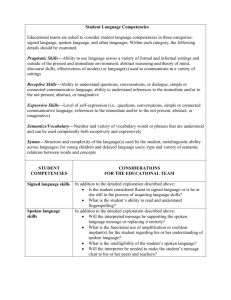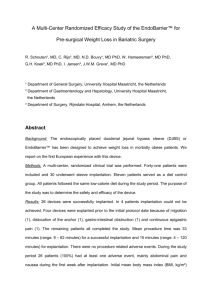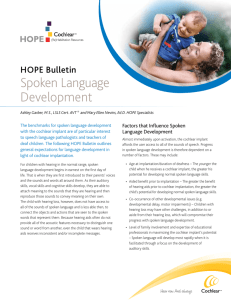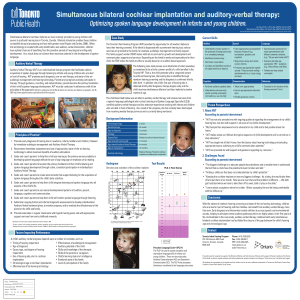Cochlear implantation in young children in a bilingual programme
advertisement
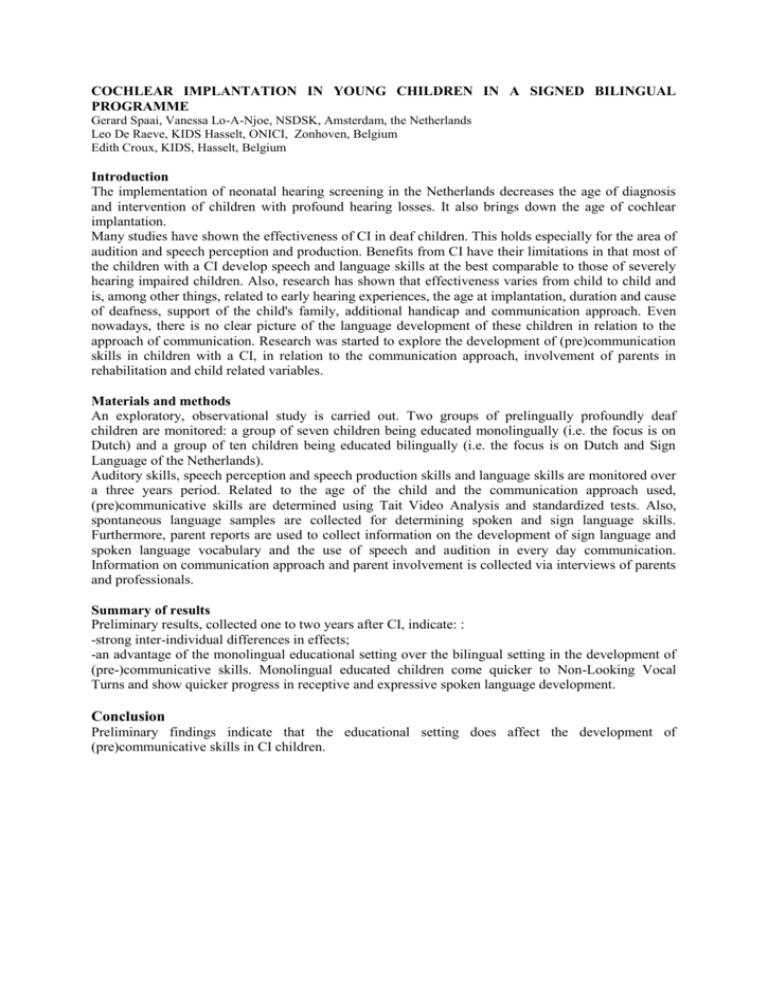
COCHLEAR IMPLANTATION IN YOUNG CHILDREN IN A SIGNED BILINGUAL PROGRAMME Gerard Spaai, Vanessa Lo-A-Njoe, NSDSK, Amsterdam, the Netherlands Leo De Raeve, KIDS Hasselt, ONICI, Zonhoven, Belgium Edith Croux, KIDS, Hasselt, Belgium Introduction The implementation of neonatal hearing screening in the Netherlands decreases the age of diagnosis and intervention of children with profound hearing losses. It also brings down the age of cochlear implantation. Many studies have shown the effectiveness of CI in deaf children. This holds especially for the area of audition and speech perception and production. Benefits from CI have their limitations in that most of the children with a CI develop speech and language skills at the best comparable to those of severely hearing impaired children. Also, research has shown that effectiveness varies from child to child and is, among other things, related to early hearing experiences, the age at implantation, duration and cause of deafness, support of the child's family, additional handicap and communication approach. Even nowadays, there is no clear picture of the language development of these children in relation to the approach of communication. Research was started to explore the development of (pre)communication skills in children with a CI, in relation to the communication approach, involvement of parents in rehabilitation and child related variables. Materials and methods An exploratory, observational study is carried out. Two groups of prelingually profoundly deaf children are monitored: a group of seven children being educated monolingually (i.e. the focus is on Dutch) and a group of ten children being educated bilingually (i.e. the focus is on Dutch and Sign Language of the Netherlands). Auditory skills, speech perception and speech production skills and language skills are monitored over a three years period. Related to the age of the child and the communication approach used, (pre)communicative skills are determined using Tait Video Analysis and standardized tests. Also, spontaneous language samples are collected for determining spoken and sign language skills. Furthermore, parent reports are used to collect information on the development of sign language and spoken language vocabulary and the use of speech and audition in every day communication. Information on communication approach and parent involvement is collected via interviews of parents and professionals. Summary of results Preliminary results, collected one to two years after CI, indicate: : -strong inter-individual differences in effects; -an advantage of the monolingual educational setting over the bilingual setting in the development of (pre-)communicative skills. Monolingual educated children come quicker to Non-Looking Vocal Turns and show quicker progress in receptive and expressive spoken language development. Conclusion Preliminary findings indicate that the educational setting does affect the development of (pre)communicative skills in CI children.
